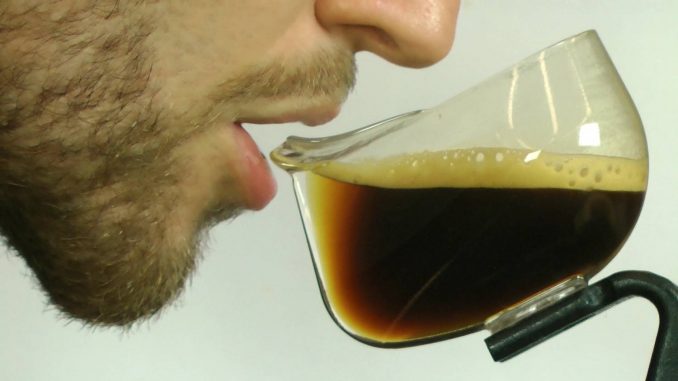
By Michelle Z. Donahue
SPECIAL TO BARISTA MAGAZINE
Something as simple as drinking from an open container on Earth can be outright dangerous in space. But an innovative new cup will soon allow astronauts to enjoy a fresh demitasse of espresso while in orbit, thanks to the magic of math.

In orbit, the usual rules about liquids don’t apply: A spilled drop in space floats around, becoming a hazard for accidental inhalation or equipment damage. So any food or drink ”coffee included ”must be consumed from a sealed bag.
The February delivery of supplies to the International Space Station (ISS), however, will include several freshly minted, 3-D printed vessels designed to take advantage of how liquids behave in microgravity. Dubbed by NASA as CapBev, or Capillary Beverage, but called simply the œspace cup by its inventors, the cup keeps liquids from floating out through creative use of surface tension and the nature of liquids to want to be in a low energy state.

Developed by researchers at IRPI LLC, a research and development firm associated with Portland State University, the cup will be the focus of a series of drinking experiments by astronauts aboard the ISS. Coffee is expected to be the most popular drink to try out, especially since the Italian espresso company, Lavazza, is preparing a custom ISSPresso machine to be delivered to the station in spring of 2015.

Professor Mark Weislogel, a fluid dynamics expert in PSU’s Department of Mechanical and Materials Engineering and a 10-year NASA veteran, is a self-proclaimed geek for all things liquid in space. Building on previous collaboration with ISS astronaut Don Pettit, Weislogel and his lab created a more mug-like iteration of a patented design Pettit developed. What once looked like a clear plastic envelope with an open top has morphed into a small, translucent cruet with a flared spout and curved handle.
The trick behind why the cup works lies in how fluids travel along the intersection of two solid planes, called an interior corner. The liquid’s œwettability, or ability to stick to and spread across a surface, allows fluids to cling to the inside of the cup. Fluids want to travel along the interior corner, and get wicked along towards the spout.
Just like a locomotive pulls its string of cars, the physical bonds that cause liquids to stick together drags the rest of the drink along after the first sip. In space, a drink drains itself into your mouth.
œYou’ll have this feeling like you’re drinking normally, but you’re not, Weislogel said. But he cautioned that though it’s a great improvement on space coffee, it still wouldn’t be the same as drinking an espresso on the ground.

Made from rigid polycarbonate plastic, the space cup has a feel similar to a Nalgene water bottle. Espresso was a main target for experiments in drop tower tests, simply because the entire experience of coffee in space wasn’t possible before, but also because the ISSPresso is slated to be sent up.

Under normal gravity, drinking espresso is multi-sensational: the rich crema rises to the surface, resulting in complex flavors, and the entire experience is completed by inhaling the aromatic vapors emanating from the coffee’s surface. In space, vapors don’t rise very far from a hot drink’s surface, and crema can’t form since carbon dioxide bubbles tend not to separate from liquids.

The way an espresso physically sticks to the inside of the space cup may allow crema to form more normally, and the mug’s compact size puts a drinker’s nose directly above the drink’s surface, allowing for a better experience of aromas.
By analyzing the HD footage astronauts will take of themselves drinking various liquids from the new cup, Weislogel said the results will have potentially far-reaching applications, from better storage for liquids to improving systems that require transport of fluids including coolants and lubricants.

œYou make these containers so the liquid goes to where you want it to be, Weislogel explained. œWe want to make engineering systems predictable. So you make a container that has a ˜bottom’ where you want it to be.

Drinks to be tested include water, clear juices, tea, tea with milk, coffee, a chocolate breakfast drink and a mango peach smoothie.
Though each astronaut will decide the order for testing, it’s not too much of a stretch to bet that Samantha Cristoforetti, Italy’s first female astronaut and currently aboard ISS, will go for espresso first.
Michelle Z. Donahue is a journalist and freelance writer who often writes on quirky science and the natural world. A graduate of Vanderbilt University, Michelle lives in Maryland with her husband and two children, who do their part to help harvest green beans from the garden in summer. One of her favorite DIY experiments was roasting green coffee beans in a hot air popcorn maker, which made the yard smell an awful lot like the German konditorei of her youth.


